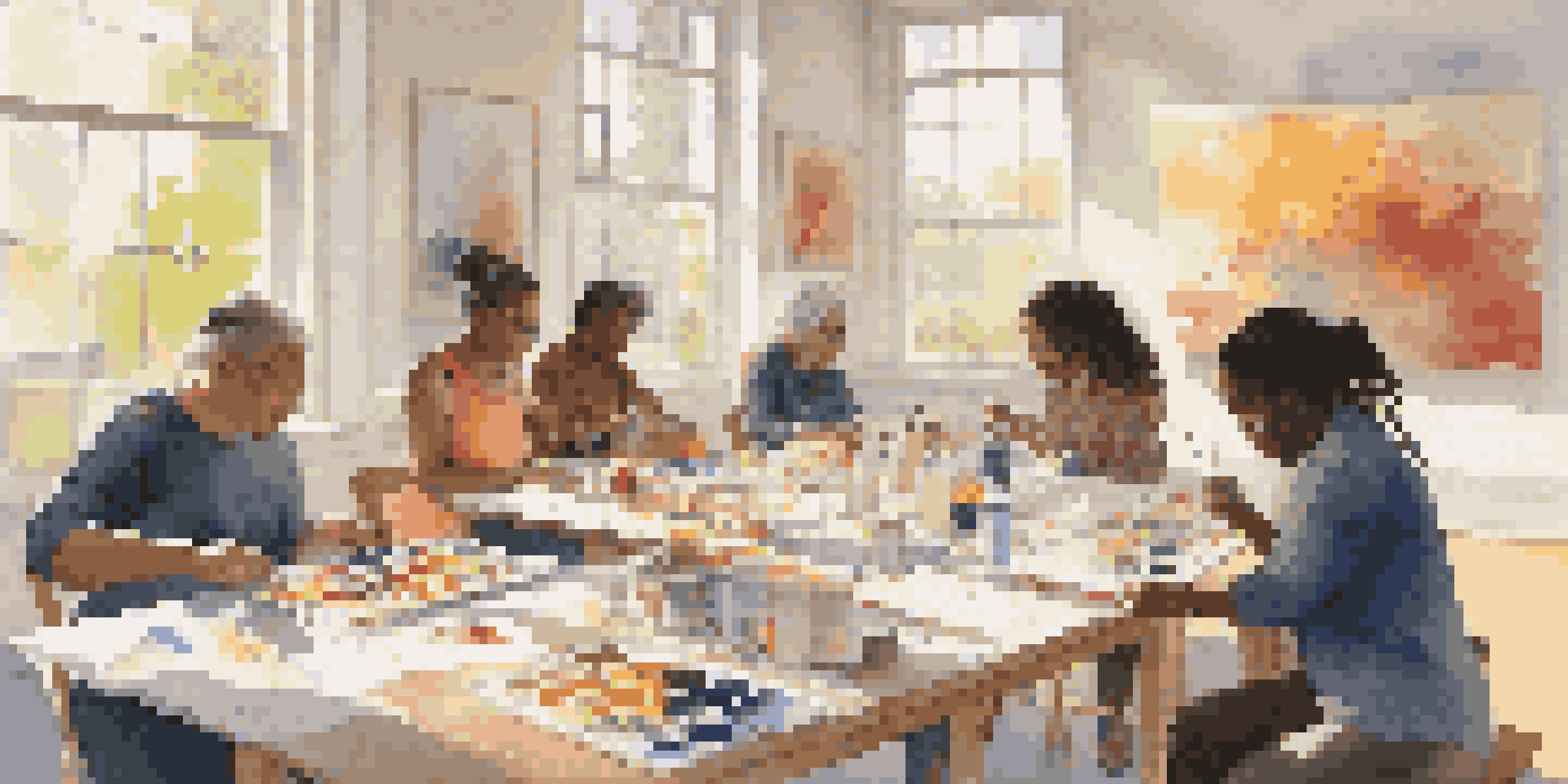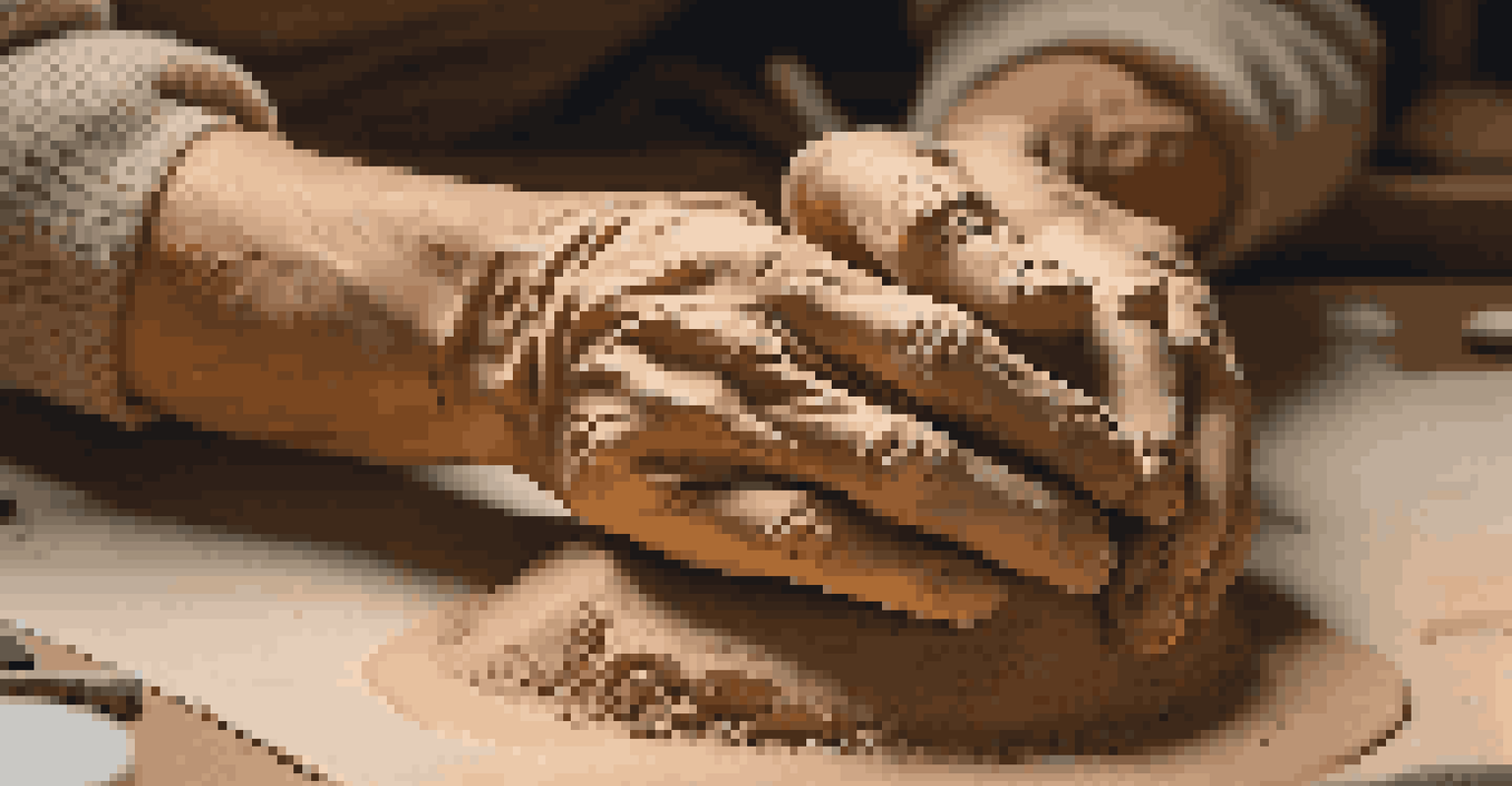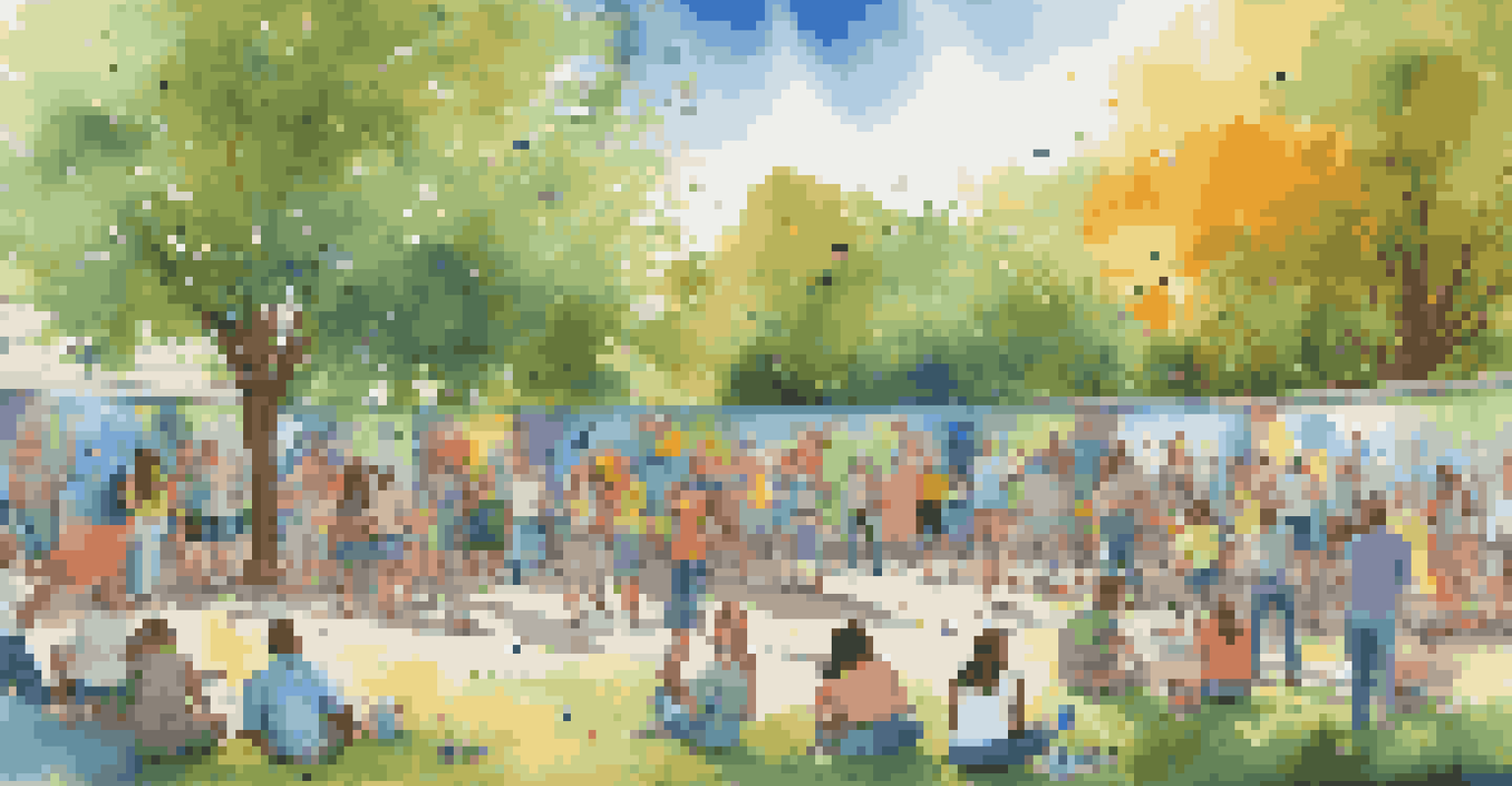The Therapeutic Role of Art in Rehabilitation Programs

Understanding the Connection Between Art and Healing
Art has long been recognized as a powerful form of expression, but its role in healing is equally significant. When individuals engage in creative activities, they often experience a release of emotions that can be cathartic. This emotional release not only fosters a sense of well-being but also aids in the recovery process, allowing individuals to confront and process their experiences.
Art is the most beautiful of all lies; it is a bridge between the real and the unreal, offering healing to those who dare to cross it.
For many, art serves as a bridge to communicate feelings that may be difficult to articulate verbally. Whether through painting, music, or writing, creative expression can help individuals articulate their thoughts and emotions, facilitating connection with others. This ability to express oneself is particularly crucial in rehabilitation settings where emotional challenges often accompany physical recovery.
Moreover, the act of creating something tangible can instill a sense of accomplishment and purpose. As individuals engage in artistic endeavors, they can gain confidence and a renewed sense of identity, which are essential components of the rehabilitation journey. This transformation not only supports emotional healing but also encourages a more holistic approach to recovery.
Art Therapy as a Structured Approach to Healing
Art therapy is a formalized technique that utilizes art-making as a therapeutic process. In this setting, trained art therapists guide individuals through creative exercises designed to address emotional, psychological, and social challenges. This structured approach allows participants to explore their feelings in a safe and supportive environment, making the healing process more effective.

Through guided sessions, individuals can engage in various artistic mediums, from drawing and painting to sculpture and digital media. Each medium offers unique benefits, allowing participants to choose the form of expression that resonates with them. This personal choice fosters ownership of the healing journey, making the process more meaningful.
Art Aids Emotional Healing
Engaging in creative activities allows individuals to express and process their emotions, fostering a sense of well-being.
Additionally, art therapy often incorporates discussions about the artwork created, providing further insight into the individual's emotional landscape. These conversations can reveal underlying issues and facilitate deeper self-reflection, leading to breakthroughs that may not occur through traditional therapy alone. By blending creativity with psychological support, art therapy becomes a powerful tool in rehabilitation.
Benefits of Art in Physical Rehabilitation
Art isn't just about emotional healing; it can also play a vital role in physical rehabilitation. Engaging in creative activities can enhance fine motor skills and hand-eye coordination, which are often compromised after injury or illness. For instance, painting or sculpting can help patients regain strength and dexterity in their hands, making art a fun and effective form of therapy.
The creative process is a process of surrender, not control.
Moreover, the focus required in art-making can serve as a distraction from pain and discomfort. Immersing oneself in a creative process often shifts attention away from physical limitations, promoting a more positive mindset. This mental diversion can be incredibly beneficial for patients who are grappling with the challenges of recovery.
In many rehabilitation centers, art activities are integrated into physical therapy routines, creating a holistic approach to recovery. By combining physical exercises with creative expression, patients are more engaged and motivated to participate in their rehabilitation. This synergy between art and physical healing enhances overall outcomes and fosters a sense of joy during recovery.
Art as a Tool for Social Connection in Rehab
Rehabilitation can often feel isolating, but art provides a platform for social interaction. Group art projects or workshops encourage collaboration, allowing individuals to connect with peers who share similar experiences. This sense of community can be incredibly uplifting, reducing feelings of loneliness and promoting mutual support.
Participating in group art activities fosters communication and teamwork, essential skills in rebuilding relationships after trauma or addiction. As individuals work alongside each other, they can share their stories, learn from one another, and build lasting connections. These relationships can be a vital source of encouragement and motivation during the recovery process.
Art Therapy Enhances Recovery
Structured art therapy sessions provide a safe environment for individuals to explore their feelings, leading to breakthroughs in healing.
Additionally, sharing artwork in a group setting can lead to discussions that deepen understanding and empathy among participants. This exchange not only validates individual experiences but also creates a sense of belonging. By fostering social connections through art, rehabilitation programs can significantly enhance the healing experience.
The Role of Creativity in Mental Health Recovery
Creativity is a powerful ally in mental health recovery, offering a constructive outlet for emotions. Engaging in artistic activities can help individuals process trauma, anxiety, and depression, providing a safe space for exploration. This therapeutic aspect of creativity can be transformative, allowing individuals to confront and express challenging feelings.
Research shows that engaging in creative activities can lead to reduced symptoms of anxiety and depression. For instance, participants in art-making sessions often report feeling more relaxed and centered after expressing themselves creatively. This emotional relief can be crucial in combating the daily stressors that accompany mental health challenges.
Moreover, creativity encourages problem-solving and resilience, essential skills in the recovery journey. As individuals experiment with different artistic techniques, they learn to navigate challenges in a supportive environment. This newfound confidence can translate into other areas of life, helping them tackle obstacles with a more positive outlook.
Integrating Art into Comprehensive Rehab Programs
To fully harness the benefits of art in rehabilitation, it’s essential to integrate creative practices into comprehensive rehab programs. This integration allows for a more holistic approach, addressing the physical, emotional, and social aspects of recovery. By recognizing the value of art, rehabilitation centers can create environments that foster healing through creativity.
Training staff in art therapy techniques can enhance the overall effectiveness of rehabilitation programs. Staff members equipped with the skills to facilitate artistic expression can better support individuals in their healing journeys. This training ensures that art is not just an add-on but a core component of the rehabilitation process.
Art Fosters Social Connections
Group art activities encourage collaboration and communication, helping individuals build supportive relationships during rehab.
Additionally, creating dedicated spaces for artistic expression within rehab facilities can encourage participation. Whether it’s an art studio or a quiet corner for reflection, these spaces can inspire creativity and provide a sanctuary for individuals to explore their artistic talents. By prioritizing art in rehabilitation, centers can create a more enriching environment for recovery.
Success Stories: Art Transforming Lives in Rehab
Many individuals have experienced remarkable transformations through art in rehabilitation programs. For example, a former athlete recovering from a severe injury discovered painting as a way to process his emotions and regain a sense of control. Through his artwork, he not only healed emotionally but also inspired others in the program to explore their creativity.
Another inspiring story involves a young woman in recovery from addiction who found solace in music. By participating in songwriting workshops, she was able to express her struggles and connect with others facing similar challenges. This newfound passion not only aided her recovery but also became a source of empowerment, helping her rebuild her life.

These success stories illustrate the profound impact that art can have on individuals in rehabilitation. By sharing their experiences, participants not only highlight the therapeutic benefits of creative expression but also encourage others to explore their artistic sides in their recovery journeys. Art truly can be a transformative force in rehabilitation.